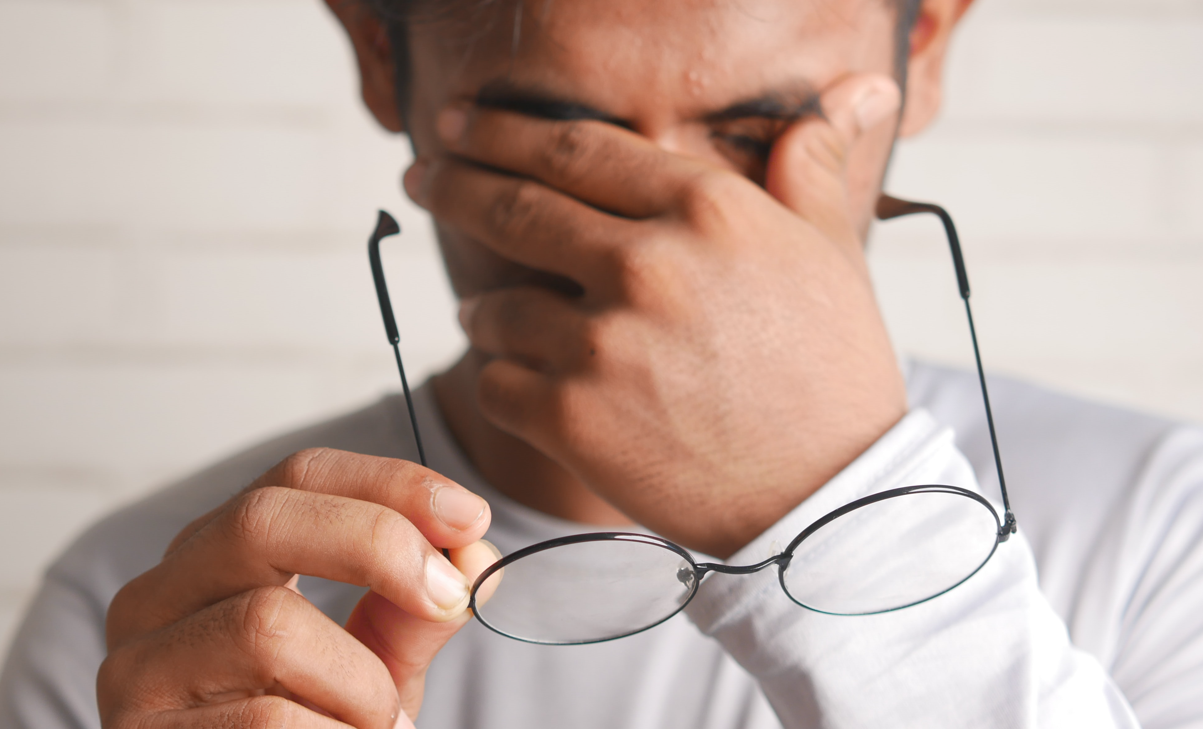Long considered a medical mystery, we take a look at what we know today about this all-too-common symptom
By Wendy Haaf
When Tim Salomons first meets with someone who has chronic pain, he often must clear up a common misunderstanding about his intentions. Because Salomons, an assistant professor of psychology at Queen’s University in Kingston, Ont., uses psychological approaches to treat chronic pain, many patients falsely assume their cognition is the culprit.
“We can work on the psychological side of it, but that doesn’t imply we think pain is the product of something mentally wrong,” Salomons stresses. Yet not long ago, that was, indeed, the prevailing medical view behind persistent pain with no obvious cause. “Every person with pain I talk to has a story about a clinician who thinks that [outdated] way,” Salomons says. Chronic pain affects an estimated one in three Canadians aged 65 and up. Here are a few other things we know—and some we’re still learning about this often mysterious symptom.
Pain is both sensation and perception
Pain results when the brain perceives particular stimuli in a particular way. With all pain—including that from an injury—chemical signals are sent along nerve fibres to the spinal cord and then to the brain. “The brain then has to make sense of that signal,” explains Dr. Deepak Ravindran, a pain specialist in the U.K. and the author of The Pain-Free Mindset (Vermilion, December 2021). “It will compare the signal to those from its life experiences and past predictions to decide how it should protect the body. That’s when the experience of pain will come along.”
It’s chronic or acute
Scientists have come to think of the kind of pain that prompts you to jerk your hand back from a hot stove as having evolved over thousands of years to “protect you or signal to you that something is wrong,” explains Dr. Norm Buckley. He’s the scientific director of McMaster University’s Michael G. DeGroote Institute for Pain Research and Care in Hamilton, Ont., and a principal investigator for the Chronic Pain Network, launched by the Canadian Institutes of Health Research to establish a national pain-research network.
This type of pain—called “nociceptive”— typically occurs in response to immediate problems, such as broken bones and inadequate oxygen for the heart, and it typically responds well to treatments such as medications and injections. However, Buckley adds, “we’re starting to collectively think about chronic pain as maladaptive pain, or pain that doesn’t serve a purpose.” It’s a bit like a malfunctioning car alarm that bleats out of the blue instead of only when someone tries breaking into the vehicle. “If your alarm is broken, it no longer gives you good information,” Salomons explains. Scientists have also begun to classify chronic pain that occurs in the absence of structural damage and/or infection into two different groups. In neuropathic pain, such as that experienced in shingles, nerve fibres seem to generate pain signals on their own.
“Sometimes you can dampen that pain message down with a little bit of anticonvulsant,” notes Buckley. Two classes of antidepressants that act on the brain chemicals norepinephrine and serotonin also “seem to help with nerve pain,” he says.
The second, newer category of chronic pain with no discernible root is dubbed “nociplastic.” In this case, something may have gone awry in the brain’s response to stimuli. “Within our nervous system, we have the capacity to damp down pain, to bring it under control somewhat,” Buckley explains. “But from some experimental studies, it looks like people [with chronic pain] may lose that capacity.” As Salomons notes, “The brain can heighten signals from the body or it can reduce them.”
Some experts believe that nociplastic pain results when sensations that wouldn’t normally be detected are instead perceived as painful. This triggers an escalating feedback loop, causing the central nervous system to become hyper-excitable. In this situation—known as central sensitization— even innocuous stimuli such as light pressure can cause pain. This is the mechanism thought to be behind chronic pain in conditions such as fibromyalgia.
All pain may share an overarching trait
Regardless of the source of the discomfort, “the research is saying that we need to view pain as a protector,” explains Ravindran. “Whenever the nervous system or the immune system is threatened, pain is the most common manifestation of that protection.” Depending on the situation, the person and his or her unique past experiences, that threat might be due to a food “considered inflammatory by the immune system, it might be an emotional state, it might be a roadtraffic accident, it might be bereavement,” Ravindran says.
The gut plays a role
In the past few decades, “studies have identified that the nervous and immune systems are deeply connected,” Ravindran says. In particular, there’s constant two-way communication between the brain and the 80 to 90 percent of the immune system located in and around the intestines. The huge colony of microorganisms that inhabit the gut, along with the compounds they produce, can inf luence this information exchange. For instance, if the normal balance between beneficial and potentially harmful bacteria is upset and the latter begin to predominate, the chemicals they release can slip into the circulatory system, wreaking havoc. According to Ravindran, research suggests this bacterial imbalance is present in 70 to 80 percent of people living with fibromyalgia: it’s the torrent of compounds unleashed by this harmful bacteria that’s responsible for the fatigue and pain associated with the condition, he says. (Incidentally, these chemicals have also been implicated in long-haul COVID-19.)
Some emerging research suggests that adjusting the gut’s microbial balance through diet “can reduce or even prevent central sensitization,” Ravindran says. As a result, there’s hope this process may help alleviate chronic or persistent pain.
Preventing and treating depression can help
Not surprisingly, living with longterm unpredictable pain can contribute to depression, which affects up to 50 percent of people with chronic pain. That’s something Linda Wilhelm, 61—a representative for the Chronic Pain Network and the president of the Canadian Arthritis Patient Alliance—has experienced first-hand. Diagnosed with rheumatoid arthritis decades before the discovery of the drugs that are now used to manage the condition, Wilhelm sometimes felt, she says, “like I was actually going crazy. I’d get depressed.” She didn’t realize it at the time, but, as she recognizes now, “the depression was compounding my pain.”
Psychological treatments can help reduce the toll
Psychotherapy can help us limit any unhelpful responses that may increase suffering linked to chronic pain—responses such as endlessly googling in search of a cure and believing that exercise exacerbates the situation. Ann Marie Gaudon—a Kitchener, Ont., social worker and psychotherapist whose own experience with chronic pain prompted her to pursue her current career so that she could help others—helps chronic- pain sufferers break what she calls “the pain chain.” To do so, she helps them recognize and change unhelpful mental responses to pain, recognize and stop resulting unhelpful behaviours, and avoid letting such thoughts dictate long-term life decisions.
“If you’re not aware of these patterns and you don’t have anyone to clarify them for you,” Gaudon says, “you can go down the pain chain, step by step, until you’re living in what I call a chronic-pain cage, where you’ve given up on life and you’re isolated.” To help keep chronic pain from shrinking her clients’ lives in this way, Gaudon arms them with a broader range of tools than what they might have had. These coping mechanisms may include, for instance, strategies for dealing with difficult and negative thoughts. “For example, after 30 years with chronic pain,” she says, “I can use medications, exercise, psychotherapy, massage therapy, ice packs.”
Activity helps moderate chronic and persistent pain
Exercise imparts mechanical benefits, such as by strengthening the surrounding muscles to ease the load on joints. But it also can reduce inflammation and stress, which, like depression and anxiety, can worsen pain. There’s even preliminary evidence that it can increase pain thresholds over time.
Sleep influences chronic pain
As Wilhelm discovered in the months before her hip-replacement surgery, when pain made it nearly impossible to fall asleep at night, “if you don’t sleep, your pain is worse,” she says. “You have to figure out how you can have good sleep habits so you can try to get a good night’s sleep.” Sleep-inducing drugs, which are effective only in the short term, should be used sparingly and as a last resort, cautions Dr. Ravindran. “Over the long term, they’re more dangerous and might even increase risk for early death.”
Still, ongoing poor sleep may increase the odds that an injury will leave chronic pain in its wake, Ravindran says: In the course of its regular functioning, the brain produces so-called waste chemicals, which can disrupt the normal information exchange between neurons, but which typically are cleared away with sufficient good-quality slumber. “But when you have chronically not slept well, a lot of these chemicals get left behind at critical junctions,” Ravindran explains. As a result, nerve signals—including those related to pain—may not be processed as they normally would. “This means that when you have a painful injury,” Ravindran says, “what starts off as straightforward” acute pain might turn into persistent pain.
A multipronged approach is best for chronic pain
According to Ravindran, making improvements to several critical lifestyle habits, such as sleep, diet and physical activity, “can calm down the nervous and immune systems, thus offering overall relief in the experience of pain.” Other grouped treatments might combine medical care, rehabilitation, physical reconditioning and psychological counselling. But while not everyone with chronic pain responds to a multidisciplinary approach, many experience significant improvements. “Often,” Buckley says, “people will say, ‘My life is so much better.’”
Photo by Toa Heftiba on Unsplash






